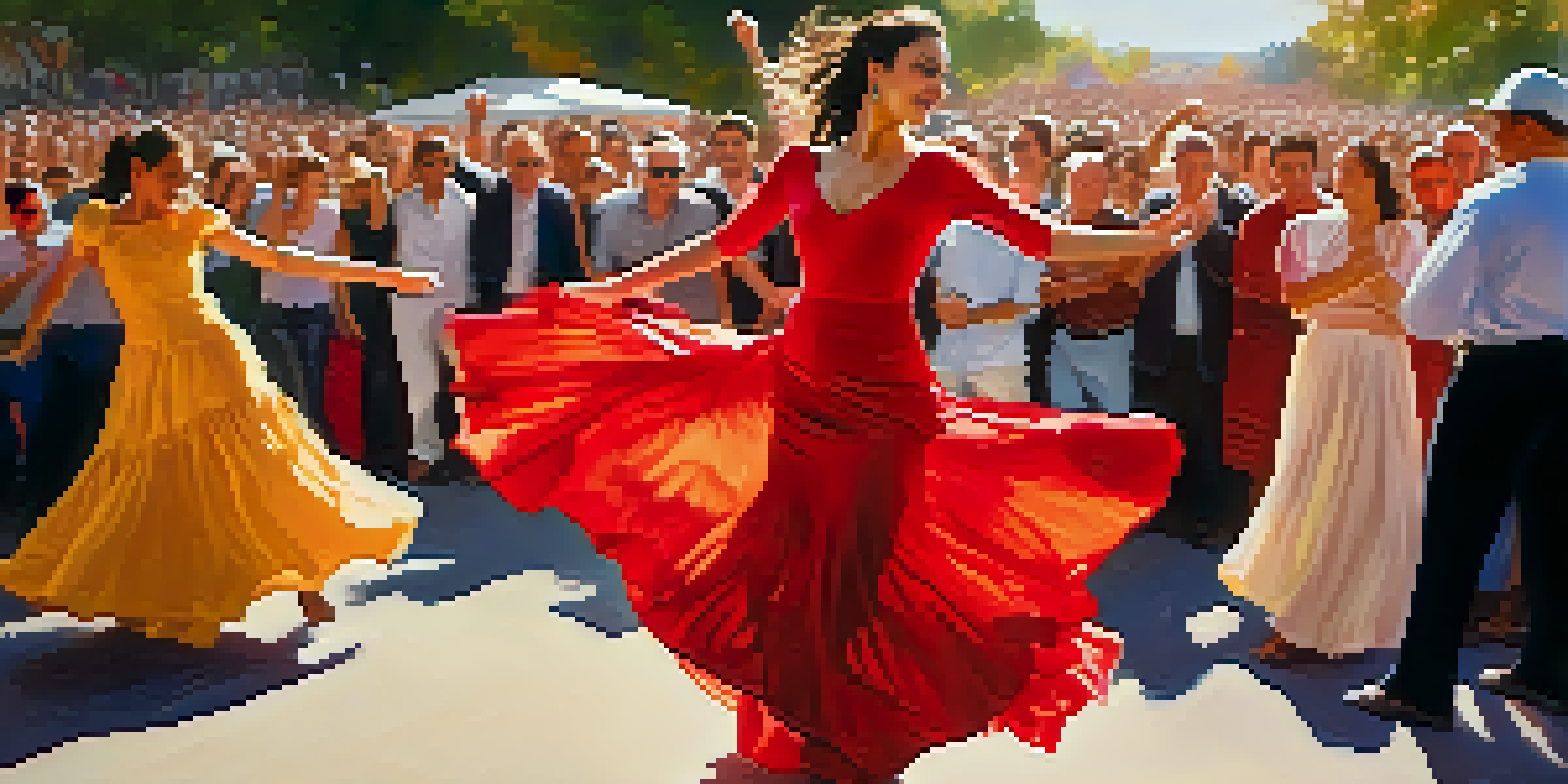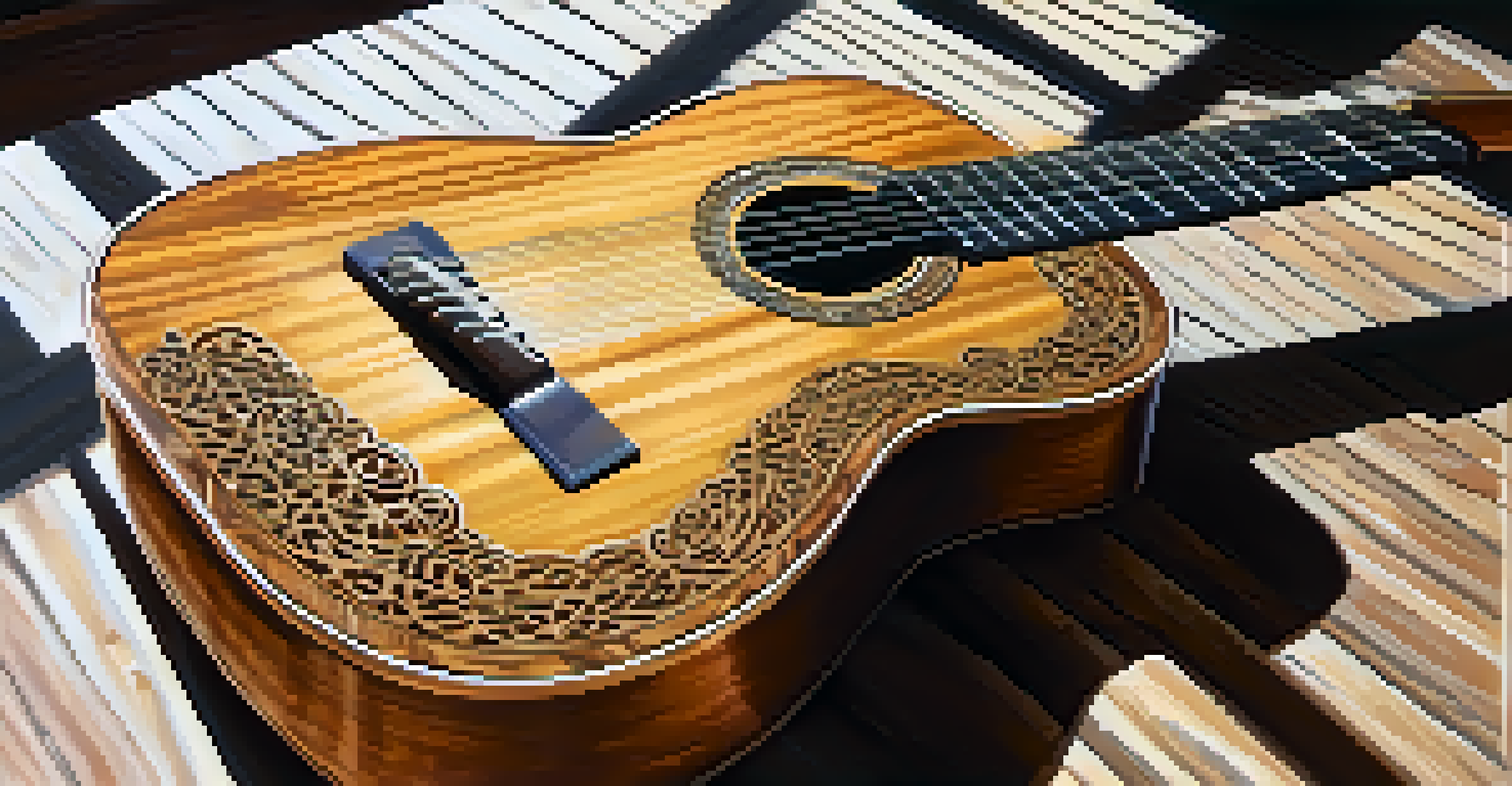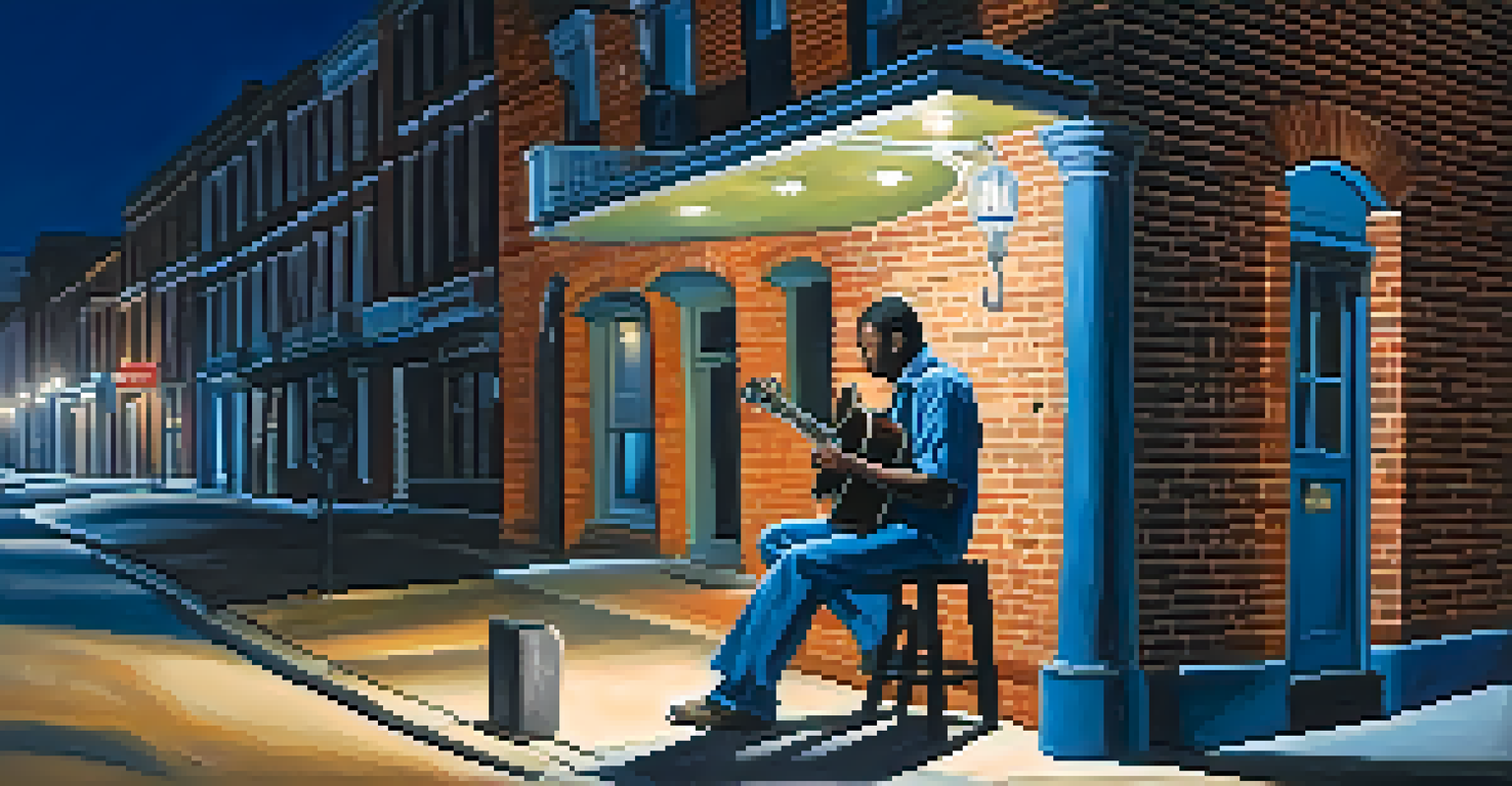From Flamenco to Blues: A Cultural Guitar Exchange

The Roots of Flamenco: A Spanish Musical Heritage
Flamenco music originated in the Andalusian region of Spain, deeply rooted in the cultural tapestry of the Romani, Moorish, and Jewish influences. This vibrant genre is characterized by its passionate guitar playing, soulful singing, and intense dance. The emotional depth of Flamenco reflects the struggles and joys of its people, making it a powerful form of artistic expression.
Music is the universal language of mankind.
At its core, Flamenco involves a unique interplay of rhythms and melodies, often incorporating intricate fingerpicking techniques and percussive strumming. The guitar serves not just as an accompaniment but as a central voice, telling stories and evoking emotions. It's a genre where the musician's feelings are directly translated into sound, creating an intimate connection with the audience.
As Flamenco spread beyond its regional boundaries, it began to influence and be influenced by various musical styles. This cross-pollination paved the way for an exciting dialogue between cultures, setting the stage for the eventual meeting with the Blues.
The Birth of Blues: African American Storytelling
Blues music emerged in the late 19th century in the Deep South of the United States, rooted in African American spirituals, work songs, and folk traditions. It served as a means of expression for the hardships, heartaches, and resilience of African Americans in a segregated society. The genre is characterized by its use of the twelve-bar blues structure and expressive guitar riffs that convey deep emotions.

Much like Flamenco, Blues is also a narrative form, with lyrics that tell stories of love, loss, and life's struggles. The guitar in Blues is often used to create a call-and-response dynamic, mirroring the conversation between the singer and the instrument. This interaction fosters a connection that resonates with listeners, drawing them into the narrative.
Flamenco and Blues' Cultural Roots
Both genres are deeply rooted in their respective cultural histories, reflecting the struggles and emotions of their communities.
As Blues music traveled, it absorbed various influences, including country and jazz, evolving into numerous sub-genres. This adaptability and openness to influence set the stage for a cultural exchange that would soon bridge the gap between Flamenco and Blues.
Cultural Crossroads: The Meeting of Flamenco and Blues
The intersection of Flamenco and Blues began in the mid-20th century, as musicians from both genres started to explore each other's sounds. This cultural exchange was facilitated by the rise of world music, which encouraged artists to blend different musical traditions. The rhythmic complexity of Flamenco and the emotive storytelling of Blues created a rich tapestry of sound that captivated audiences.
Without music, life would be a mistake.
Artists like the legendary guitarist Paco de Lucía began to experiment with incorporating Blues elements into Flamenco, creating a fresh fusion that highlighted the similarities between the two genres. Similarly, Blues musicians found inspiration in Flamenco's intricate rhythms and passionate melodies, leading to innovative collaborations. This blending of styles resulted in a unique sound that transcended cultural boundaries.
Such collaborations not only enriched the music itself but also fostered a deeper understanding between cultures. Musicians began to recognize the universal themes of love, struggle, and resilience that resonated in both Flamenco and Blues, paving the way for future generations to explore these connections.
Famous Collaborations: Icons of Cultural Fusion
One of the most notable collaborations between Flamenco and Blues is the work of guitarist and composer Vicente Amigo and Blues musician Eric Clapton. Their partnership showcased how two distinct musical traditions could come together to create something beautiful and new. This collaboration highlighted the shared emotions and stories that both genres convey.
Another example is the fusion between the Flamenco singer Camarón de la Isla and the Blues artist John Lee Hooker. Their music exemplifies the power of blending different sounds while maintaining the essence of each genre. Such collaborations have not only produced memorable music but also helped to bridge cultural gaps and promote mutual respect between artists.
Innovative Collaborations Emerge
Musicians from Flamenco and Blues have come together to create unique fusions, showcasing the beauty of cultural exchange.
These iconic partnerships serve as a testament to the enduring nature of music as a universal language. They inspire future artists to continue exploring the rich connections between diverse musical traditions, proving that creativity knows no borders.
The Role of Festivals: Celebrating Cultural Exchange
Music festivals have become vital platforms for showcasing the fusion of Flamenco and Blues, celebrating the cultural exchange that occurs when these two genres meet. Events like the International Flamenco Festival and the Blues Music Awards invite artists from both backgrounds to share their music and collaborate, fostering a spirit of unity and creativity.
These festivals not only highlight individual performances but also encourage workshops, jam sessions, and discussions about the influences and similarities between the two genres. Attendees have the opportunity to learn about the roots of each style and experience live collaborations that bring the music to life. It creates an immersive environment where cultural appreciation flourishes.
By providing a space for artistic expression and collaboration, these festivals help to break down barriers and promote understanding among diverse audiences. They serve as a reminder that music is a powerful tool for connection, transcending language and cultural divides.
Modern Influences: New Generations of Musicians
Today, a new generation of musicians continues to explore the fusion of Flamenco and Blues, pushing the boundaries of what both genres can be. Artists are increasingly drawing from their cultural heritage while embracing modern influences, resulting in innovative sounds that reflect the diverse world we live in. This evolution keeps the music fresh and relevant, appealing to a broader audience.
Musicians like Oren Ambarchi and Kaki King are blending guitar techniques from both Flamenco and Blues, creating unique compositions that showcase the strengths of each style. These artists are not only preserving traditional elements but are also experimenting with new technologies and arrangements, making the music accessible to younger audiences.
Festivals Celebrate Musical Fusion
Music festivals serve as vital platforms for artists to collaborate and celebrate the shared influences of Flamenco and Blues.
As the lines between musical genres continue to blur, the connection between Flamenco and Blues serves as a reminder of the power of cultural exchange. This ongoing dialogue enriches the musical landscape, allowing artists to draw inspiration from one another and create something entirely new.
Embracing Diversity: The Future of Flamenco and Blues
The future of Flamenco and Blues lies in their ability to adapt and embrace diversity. As artists continue to collaborate and draw from various influences, the music will evolve, reflecting the ever-changing cultural landscape. This ongoing evolution ensures that both genres remain vibrant and relevant in today's world.
By embracing diversity, musicians can create a rich tapestry of sound that honors their roots while exploring new possibilities. This openness to experimentation allows for the emergence of fresh styles and ideas that resonate with audiences across the globe. It's a beautiful reminder that music is a living, breathing entity that thrives on innovation.

Ultimately, the cultural exchange between Flamenco and Blues highlights the importance of understanding and appreciating one another's traditions. As we look to the future, we can celebrate the beauty of diversity in music, knowing that it connects us all in profound ways.